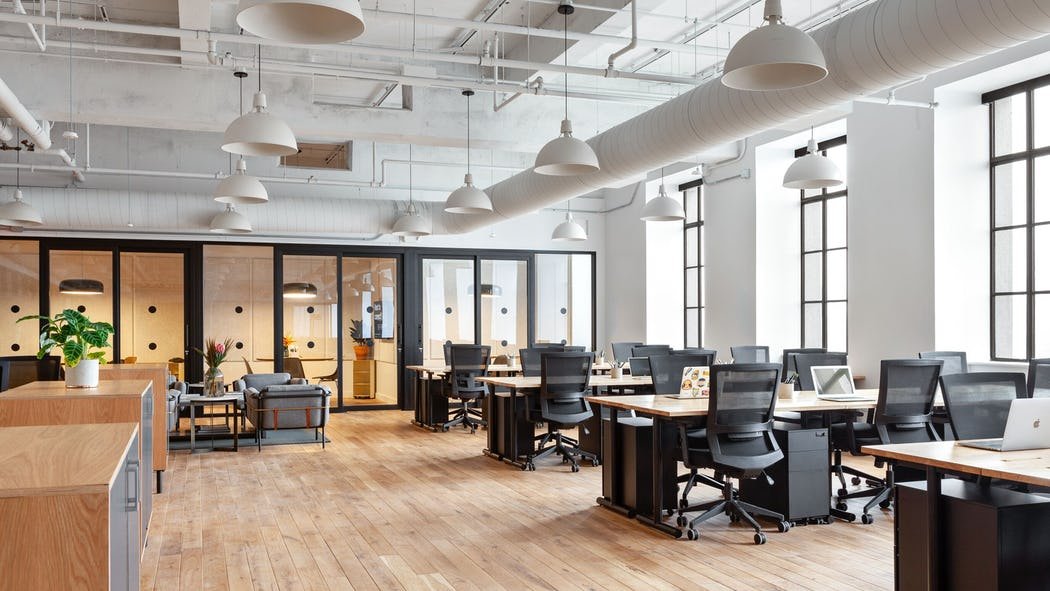Choosing the right office rental is a crucial decision for any business. The right office space can enhance productivity, foster creativity, and leave a positive impression on clients and employees alike. In 2024, as businesses continue to adapt to evolving work patterns, understanding how to select the ideal office rental is more important than ever. A well-chosen office not only meets your operational needs but also aligns with your company’s culture and goals. This guide will help you navigate the complexities of office rentals, from understanding different types of spaces to negotiating favorable terms. By considering key factors and utilizing best practices, you can find an office rental that supports your business’s success and growth.
Understanding Office Rentals
Definition and Types of Office Rentals
Office rentals refer to leasing spaces that businesses use for their operations. There are various types of office rentals, including traditional offices, coworking spaces, and virtual offices. Traditional offices are typically leased spaces where businesses operate full-time, offering dedicated areas and privacy. Coworking spaces provide shared environments with flexible terms, fostering collaboration among different companies and individuals. Virtual offices offer a professional address and administrative services without a physical workspace, ideal for businesses that don’t require a physical office but need a professional image. Understanding these types helps in choosing an office rental that best fits your business model and needs.
Key Factors to Consider in Office Rental Decisions
When selecting an office rental, several key factors must be considered. Location is critical, as it affects accessibility for employees and clients. The size and layout of the space should accommodate your team and operational needs comfortably. Amenities, such as internet access, meeting rooms, and kitchen facilities, can significantly impact daily operations and employee satisfaction. Cost is another vital factor; it’s important to budget for not just the rental fee but also additional expenses like utilities and maintenance. Evaluating these factors will help you make an informed decision and find an office rental that meets your business requirements.
Factors to Consider When Renting an Office
Location: Importance of Choosing the Right Location
The location of your office rental can greatly influence your business’s success. A prime location can enhance your company’s visibility, attract clients, and make it easier for employees to commute. Proximity to public transportation and major roads can also be a significant advantage. Additionally, the surrounding area should align with your business’s image and offer amenities like restaurants and banks. Choosing a location that meets these criteria ensures that your office space supports your operational efficiency and enhances your company’s professional presence.
Size and Layout: Finding the Right Space for Your Needs
Selecting the right size and layout for your office rental is essential to accommodate your business operations effectively. Consider the number of employees, the nature of your work, and any future growth plans when evaluating space. Open layouts may foster collaboration, while separate offices can provide privacy for individual tasks. Ensure there is enough space for essential equipment, meeting rooms, and common areas. A well-planned layout can improve workflow, increase productivity, and create a comfortable working environment for your team.
Amenities: Essential Features to Look For
Amenities can greatly impact the functionality and comfort of your office space. Essential features to look for include reliable internet connectivity, adequate heating and cooling systems, and access to meeting rooms. Additional amenities like kitchen facilities, break areas, and secure entry systems can enhance employee satisfaction and streamline daily operations. Evaluate whether the office space offers these features or if they can be added to meet your specific needs. Well-chosen amenities contribute to a productive and enjoyable work environment.
Cost: Budgeting and Understanding Rental Costs
Budgeting for an office rental involves more than just the monthly lease payments. Be sure to account for additional costs such as utilities, maintenance, property taxes, and insurance. Some leases may include these costs in the rental fee, while others may require separate payments. It’s important to review the lease agreement carefully to understand what is included and any potential extra expenses. Proper budgeting helps prevent financial strain and ensures that the office rental fits within your business’s financial plan.
Types of Office Spaces
Traditional Office Spaces: Benefits and Limitations
Traditional office spaces offer a dedicated environment for businesses with full control over the workspace. They provide privacy, a professional setting, and the ability to customize the space to fit specific needs. However, they often come with longer lease terms and higher costs compared to other options. Traditional offices are ideal for companies looking for stability and a permanent base of operations. While they offer numerous benefits, businesses must weigh these against the potential limitations, such as higher expenses and less flexibility.
Coworking Spaces: Flexibility and Community Aspects
Coworking spaces are shared environments that offer flexible rental terms and foster a sense of community among different businesses and freelancers. These spaces are typically equipped with shared amenities like meeting rooms, high-speed internet, and communal areas. Coworking spaces provide an opportunity for networking and collaboration while reducing overhead costs associated with traditional office rentals. They are well-suited for startups, freelancers, and small businesses that benefit from a flexible work environment and the potential for networking with other professionals.
Virtual Offices: When and Why They Might Be a Good Fit
Virtual offices provide a professional business address and administrative support without requiring a physical office space. This option is ideal for businesses that need a formal address for correspondence and client meetings but do not require a full-time office. Virtual offices offer flexibility and cost savings by eliminating the need for a physical workspace. They are particularly beneficial for remote teams, startups, and businesses looking to expand their presence without incurring the costs of a traditional office.
How to Find the Right Office Rental
Research: Best Practices for Searching for Office Spaces
Effective research is crucial for finding the right Office rental. Start by defining your needs and preferences, such as location, size, and amenities. Use online platforms, real estate agents, and local listings to explore available options. Consider visiting multiple properties to compare features and assess their suitability. Engage with landlords and property managers to gather detailed information about the space and lease terms. Thorough research helps ensure that you find an office rental that meets your criteria and supports your business goals.
Viewing: Tips for Evaluating Potential Rentals
When viewing potential office rentals, it’s important to assess both the physical space and the surrounding environment. Check the condition of the building, including cleanliness, maintenance, and security features. Evaluate the layout and ensure it aligns with your needs. Pay attention to natural light, ventilation, and noise levels, as these factors can impact the work environment. Additionally, consider the accessibility of the location and the availability of nearby amenities. A thorough evaluation during viewings helps identify any potential issues and ensures you make an informed decision.
Negotiation: How to Negotiate Favorable Terms
Negotiating the terms of your office rental lease can result in significant savings and better conditions. Start by understanding the market rates and comparable properties to strengthen your bargaining position. Discuss lease terms, including rent, duration, and renewal options. Negotiate additional benefits such as rent-free periods, maintenance responsibilities, and improvements to the space. It’s advisable to seek professional advice from real estate agents or legal experts to ensure that the lease agreement meets your needs and protects your interests.
Legal and Contract Considerations
Lease Agreements: Key Terms to Understand
A lease agreement outlines the terms and conditions of your office rental. Key terms to understand include the rental amount, lease duration, renewal options, and any additional costs. Review clauses related to maintenance responsibilities, insurance requirements, and subletting options. It’s important to ensure that the lease agreement reflects the negotiated terms and provides clarity on both parties’ obligations. Thoroughly understanding the lease terms helps avoid potential disputes and ensures a smooth rental experience.
Legal Obligations: What to Be Aware of in a Rental Agreement
When entering into a rental agreement, be aware of your legal obligations as a tenant. These may include complying with property maintenance requirements, adhering to noise and usage policies, and fulfilling financial commitments. Understand your rights regarding lease termination, security deposits, and dispute resolution. Familiarize yourself with local laws and regulations that govern office rentals to ensure compliance and protect your legal interests. Seeking legal advice can provide additional assurance and help navigate any complex issues in the rental agreement.
Moving Into Your New Office
Planning the Move: Steps to Ensure a Smooth Transition
Planning your move into a new office requires careful preparation to ensure a smooth transition. Create a detailed moving plan that includes timelines, tasks, and responsibilities. Coordinate with moving companies and arrange for any necessary permits or permissions. Communicate with your team about the move schedule and provide guidance on the new office setup. Proper planning helps minimize disruptions to your business operations and ensures that the move is executed efficiently and effectively.
Setting Up: Essential Tasks for Setting Up Your New Office
Setting up your new office involves several essential tasks to create a functional and welcoming work environment. Arrange for the installation of essential equipment, such as computers, phones, and furniture. Set up utilities, including internet, electricity, and water. Organize the layout to promote workflow and productivity, and ensure that all safety and compliance requirements are met. Personalize the space to reflect your company’s brand and culture. Proper setup contributes to a productive work environment and a positive start in your new office.
Conclusion
Finding the perfect office rental involves careful consideration of various factors, including location, size, amenities, and cost. By understanding the different types of office spaces and following best practices for searching, viewing, and negotiating, you can make an informed decision that supports your business’s needs. Legal and contract considerations are also crucial to ensure a smooth rental experience. Proper planning and setup will help you transition seamlessly into your new office and create a productive work environment. Take the time to find an office rental that aligns with your business goals and enhances your operational efficiency.



